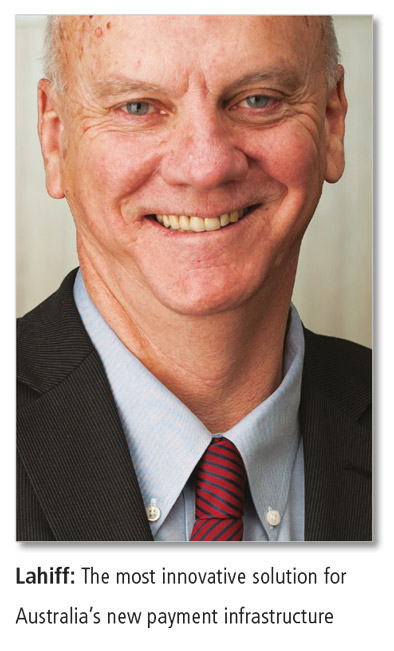Real-time, round-the-clock low-value payments are increasingly what today’s banking customers want. Following the March 2014 launch of Fast and Secure Transfers (FAST) in Singapore, Australia is poised to become the next country in the region to provide this service. Australian Payments Clearing Association (APCA) announced in December 2014 that it had selected SWIFT, the world-wide payment cooperative, as the vendor for the sensiblynamed New Payments Platform (NPP).
The new system is expected to take two and a half years to develop, with the target launch in the third quarter of 2017. It will enable customers of the 17 participating domestic financial institutions to transfer money instantly, 24 hours a day, to a recipient at another institution.
“SWIFT won a highly competitive tender by proposing the most innovative solution for Australia’s new payment infrastructure,” Paul Lahiff, chair of NPP Australia, tells The Asset. SWIFT’s proposal was chosen from among six submissions in a selection process that span most of 2014, he adds.
 |
|
Selecting SWIFT as the vendor carries several advantages. Australia’s financial institutions already use the cooperative’s technology for international as well as domestic real time gross settlement (RTGS) payments. The existing users of the system will be able to re-use their current connectivity, thus reducing the cost to implement NPP.
Unlike Singapore’s FAST, which relies on a central scheme for routing messages and for keeping track of banks’ balances, SWIFT’s proposed architecture for NPP is distributed, based on a peer-to-peer model, eliminating a potential single point of failure.
“The NPP has been designed with a layered architecture that separates the infrastructure from ‘overlay services’,” notes Lahiff. The basic infrastructure can be compared to new train tracks, on which payment services can be delivered. “These tracks will support a number of new payment services, which will be market-driven and competitive,” he adds. “Eventually, there will be a lot of different payments using the tracks, but we don’t know what all of them will look like yet.”
SWIFT will develop three new technology components: a domestic messaging channel, a payment gateway and the addressing database. The domestic messaging channel, in essence an onshore data centre, will help overcome potential latency issues that could arise if SWIFT’s current data centres in Europe or North America were used.
The payment gateway, an interface that will be deployed at each participating institution, will orchestrate clearing and settlement between the banks and the Reserve Bank of Australia. In the future, this technology will also allow incorporation of value-added services (‘overlays’), providing a platform for further innovation.
The addressing database will make it possible to send payments by using the recipient’s alias, email address or a mobile number as the identifier, making the use of banks’ cumbersome SWIFT codes and account numbers unnecessary.
NPP will use the state-of-the-art ISO 20022 messaging standard. The XMLbased format is designed to provide robustness, simplicity, flexibility and extensibility to incorporate additional content in the future.
SWIFT’s foray into the fast payment space is a natural progression for the organization. Starting from interbank international payments in the 1970s, it moved into the RTGS space in 1990s and into the low-value payments soon after.
While several countries in Asia and the world are looking to implement similar systems, the progress however isn’t very fast. Infrastructure investment into a new payment system does not make a compelling business case for individual institutions, says Michael Moon, director of payment markets, Asia-Pacific, at SWIFT. “It’s good for the financial development of the market,” he adds. “Where it actually gets traction, it’s driven by government policy or the central bank.”
Nevertheless, real-time payments are the future. Several countries in the region are looking to implement their own new systems, including Hong Kong and Japan, whose Zengin offers real-time fund transfers, but not on a 24/7 basis.
The main benefits of real-time payment systems are intraday liquidity and reduction of the cost of money, adds Moon. Governments also have an incentive to promote electronic funds transfers to improve their anti-money laundering and anti-tax evasion efforts. For that, however, the systems must be extended to support higher value payments.
“Over a period of time, there will be more and more demand for real time on everything,” says Moon. Even though today it’s about a retail consumer sending money to settle a restaurant bill, tomorrow we may use fast payment to buy property.





.jpg)



